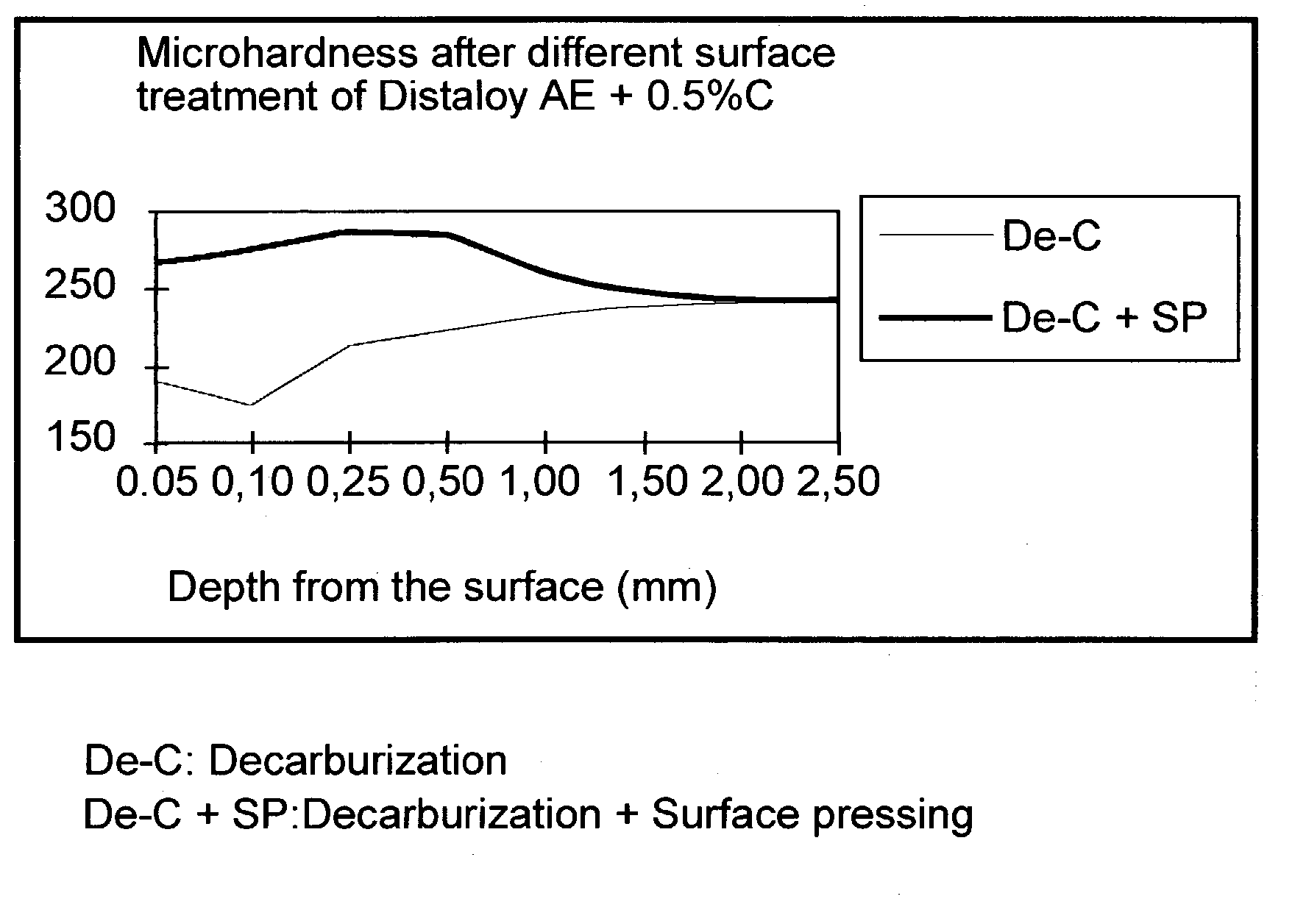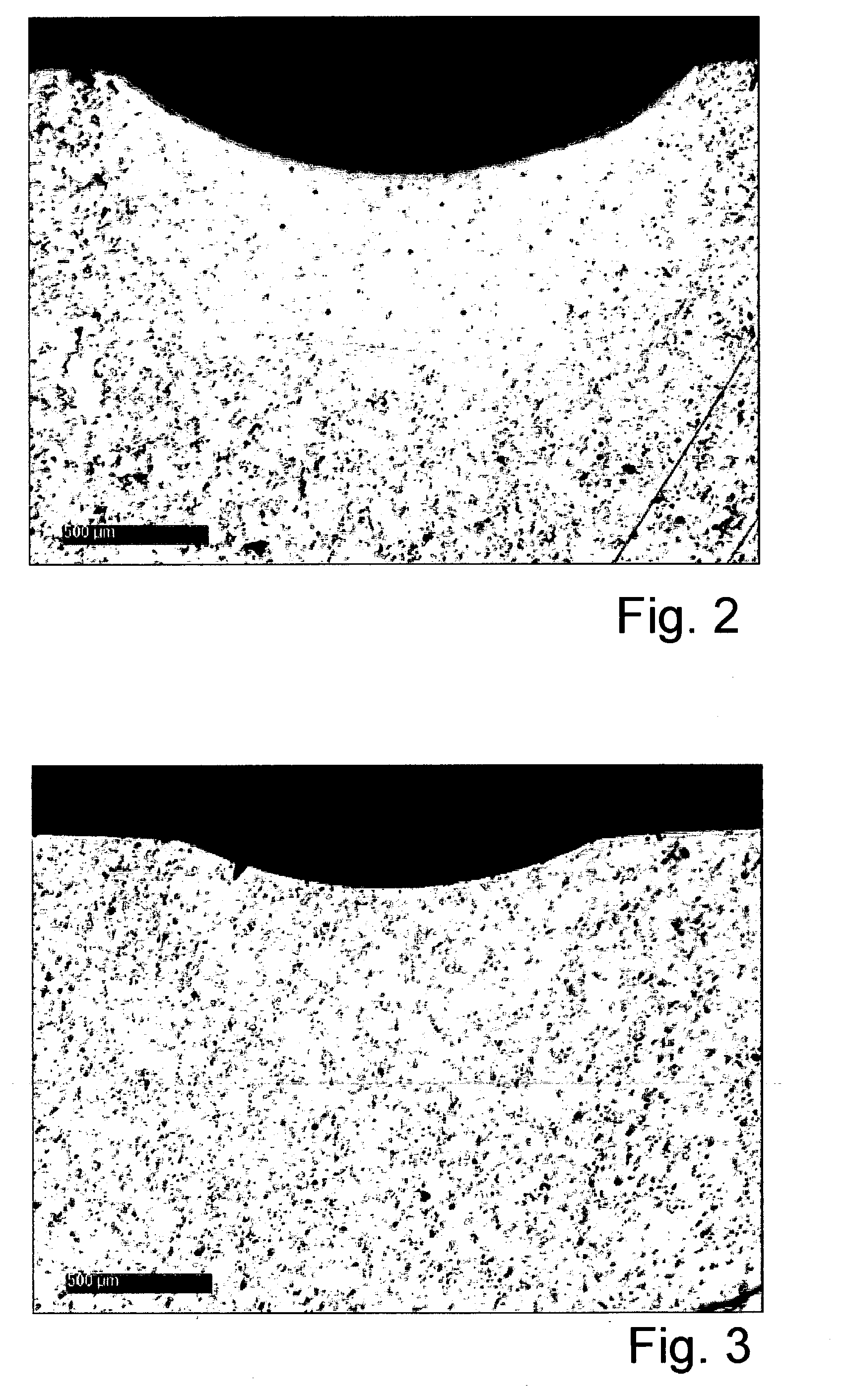Method of production of surface densified powder metal components
a technology of powder metal components and densified powder, which is applied in the direction of metallic material coating process, solid-state diffusion coating, coating, etc., can solve the problems of low utilization rate of pm sintered parts in automobiles, poor material utilization rate and relatively high cost versus production by powder metallurgy (pm) processes, and the reduction of the bending fatigue strength of powder metal gears in the tooth and root region of the gear
- Summary
- Abstract
- Description
- Claims
- Application Information
AI Technical Summary
Benefits of technology
Problems solved by technology
Method used
Image
Examples
example
[0029]Iron based alloys with compositions according to table 1 were prepared. The powder mixtures were compacted into test components with a compacting pressure of about 600 MPa to give a green density of about 7,0 g / cm3. The compacted components were thereafter treated to the five different decarburization processes shown below:[0030]A. Sintering at 1120° C. / 30 min in 30% N2 / 70% H2, followed by cooling at 0,5–2,0° C. / s.[0031]B. (Single process) Sintering at 1120° C. / 25 min in 90% N2 / 10% H2, followed by sintering (decarburization) at 1120° C. / 5 min in 33% of wet and 67% of dry 90% N2 / 10% H2 and cooling at 0,5–2,0° C. / s in 33% of wet and 67% of dry 90% N2 / 10% H2.[0032]C. (Single process) Sintering at 1120° C. / 25 min in 90% N2 / 10% H2, followed by sintering (decarburization) at 1120° C. / 5 min in 20% of wet and 80% of dry 90% N2 / 10% H2 and cooling at 0,5–2,0° C. / s in 20% of wet and 80% of dry 90% N2 / 10% H2.[0033]D. Sintering at 1120° C. / 30 min in endogas with 0,65% of CO2, followed by c...
PUM
| Property | Measurement | Unit |
|---|---|---|
| Temperature | aaaaa | aaaaa |
| Temperature | aaaaa | aaaaa |
| Fraction | aaaaa | aaaaa |
Abstract
Description
Claims
Application Information
 Login to View More
Login to View More - R&D
- Intellectual Property
- Life Sciences
- Materials
- Tech Scout
- Unparalleled Data Quality
- Higher Quality Content
- 60% Fewer Hallucinations
Browse by: Latest US Patents, China's latest patents, Technical Efficacy Thesaurus, Application Domain, Technology Topic, Popular Technical Reports.
© 2025 PatSnap. All rights reserved.Legal|Privacy policy|Modern Slavery Act Transparency Statement|Sitemap|About US| Contact US: help@patsnap.com



